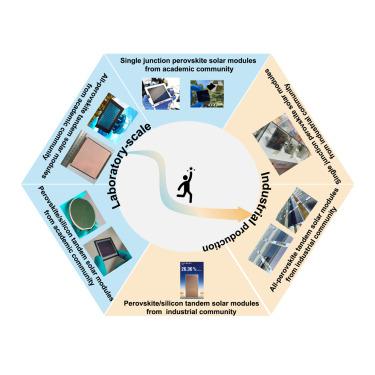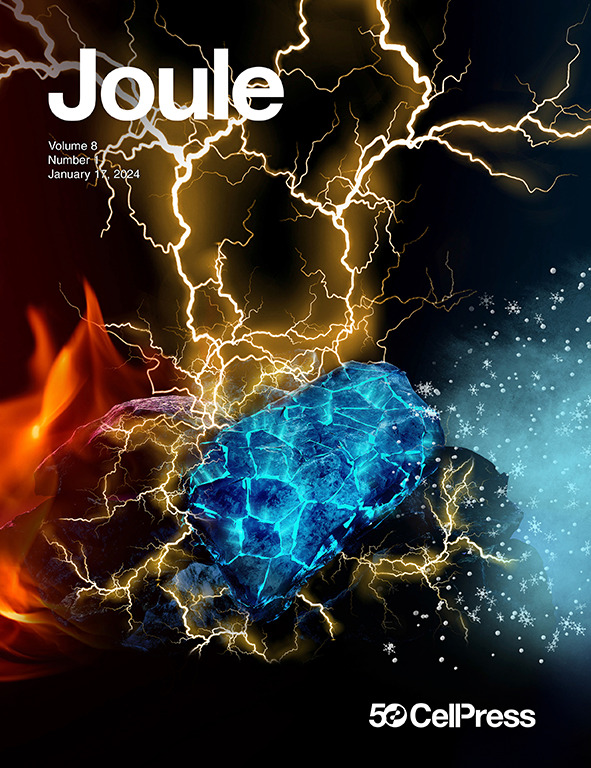效率超过20%的钙钛矿太阳能组件:从实验室到工业社区
IF 35.4
1区 材料科学
Q1 CHEMISTRY, PHYSICAL
引用次数: 0
摘要
钙钛矿太阳能电池/组件(PSCs/ psm)由于其高效率、易于制造、低成本和与串联器件的兼容性,在过去的十年中在学术界和工业界都取得了重大进展。迄今为止,psm的创纪录功率转换效率(PCE)主要是通过旋转涂层方法,结合实验室规模器件的n-i-p和/或p-i-n配置来实现的。相比之下,槽模涂层方法在工业领域广泛用于制造psm,通常具有p-i-n结构。研究人员面临的关键挑战之一是将这种实验室技术转化为工业规模的生产。在这篇综述中,我们概述了目前在学术界和工业界效率超过20%的psm的发展。我们讨论了器件配置、制造技术、模块尺寸和商业化过程等各个方面。此外,我们概述了psm从实验室研究过渡到工业应用所面临的挑战,并提供了弥合这两种情况之间效率差距的观点。本文章由计算机程序翻译,如有差异,请以英文原文为准。


Perovskite solar modules with high efficiency exceeding 20%: From laboratory to industrial community
Perovskite solar cells/modules (PSCs/PSMs) have made significant advancements in both academic and industrial communities over the past decade due to their high efficiency, facile fabrication, low cost, and compatibility with tandem devices. To date, the record power conversion efficiency (PCE) of PSMs has primarily been achieved using the spin-coating method, combined with n-i-p and/or p-i-n configuration in laboratory-scale devices. By contrast, the slot-die coating method is widely used in the industrial community for manufacturing PSMs, typically with a p-i-n structure. One of the key challenges faced by researchers is transitioning this laboratory technique into industrial-scale production. In this review, we provide an overview of the current developments in PSMs, with efficiencies exceeding 20%, in both academic and industrial communities. We discuss various aspects such as device configurations, manufacturing techniques, module sizes, and commercialization process. Additionally, we outline the challenges faced by PSMs as they transition from laboratory research to industrial application and offer perspectives on bridging the efficiency gap between these these two cases.
求助全文
通过发布文献求助,成功后即可免费获取论文全文。
去求助
来源期刊

Joule
Energy-General Energy
CiteScore
53.10
自引率
2.00%
发文量
198
期刊介绍:
Joule is a sister journal to Cell that focuses on research, analysis, and ideas related to sustainable energy. It aims to address the global challenge of the need for more sustainable energy solutions. Joule is a forward-looking journal that bridges disciplines and scales of energy research. It connects researchers and analysts working on scientific, technical, economic, policy, and social challenges related to sustainable energy. The journal covers a wide range of energy research, from fundamental laboratory studies on energy conversion and storage to global-level analysis. Joule aims to highlight and amplify the implications, challenges, and opportunities of novel energy research for different groups in the field.
 求助内容:
求助内容: 应助结果提醒方式:
应助结果提醒方式:


